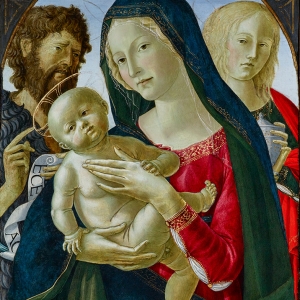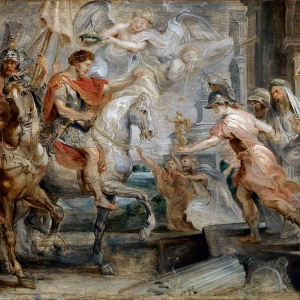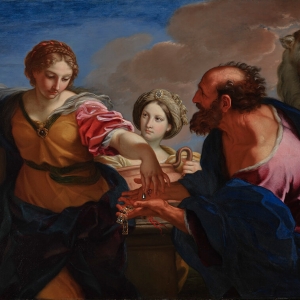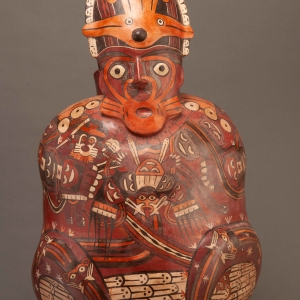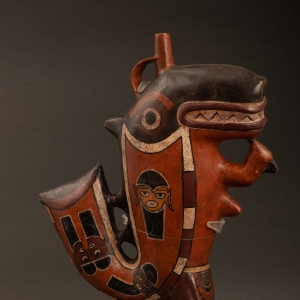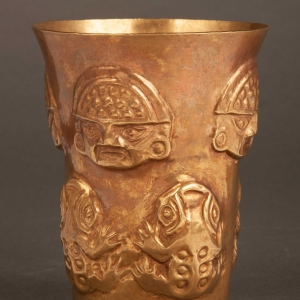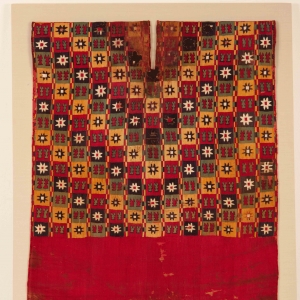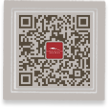馆内
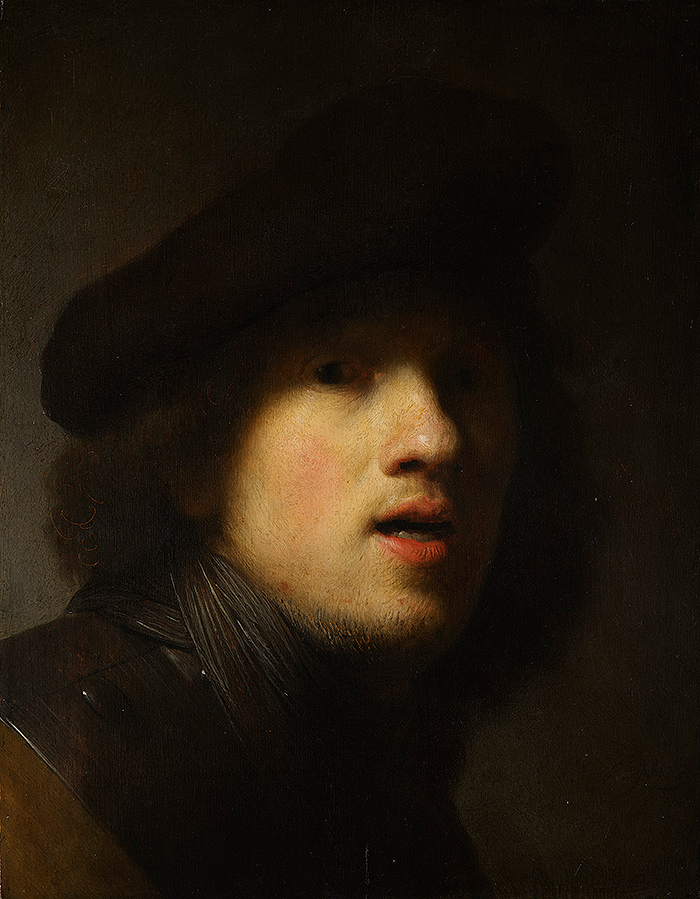
展览介绍
From Renaissance to Impressionism: Five Hundred Years of European Paintings
In the exhibition “From Renaissance to Impressionism: Five Hundred Years of European Paintings”, 60 European masters’ paintings from the Indianapolis Museum of Art at Newfields were particularly selected. The 60 chosen artworks, with extraordinary techniques and significant artistic value, offer an overview of European paintings from the 14th to the 19th century. Works of the most eminent European masters such as Titian, Rubens, Rembrandt, El Greco, Goya, Turner, Monet, Gauguin, Renoir, etc., are included. Artworks of the exhibition cover different geological regions including Italy, the Netherlands, England and France, and contain principal phases and major schools of European art history including the Renaissance, Baroque, Rococo, Naturalism and Classicism, Neoclassicism, Romanticism, Realism and Impressionism. During this historical period (14th to 19th century), the European economy grew at an unprecedented rate, the society were under radical changes, and the art of painting witnessed major evolution from classics to modernism, with its historical meaning and profound influence lasting till today.

展品欣赏

展览介绍
Ancient Peru Civilization: Exploring the Origin of the Inca Empire
In the far west of South America, on the other side of the Pacific Ocean, lies a mysterious country called Peru, where the Andes Mountains run from the north to the south, forming a unique natural ecological environment that has nurtured generations of indigenous Indians and later immigrants, creating a splendid and fascinating ancient civilization.
Ancient civilization in Peru has a long history. Since the arrival of the Asian Mongoloids across the Bering Strait 13,000 years ago, it had been developing over a long period of time and eventually culminated in the establishment of the Inca Empire, which marks the pinnacle of the development of ancient Peruvian civilization and that of the Andean region as a whole. Although the Inca Empire, with Peru at its center, was lost to the Spanish colonial invaders in the 16th century, the influence it has left on the history of human civilization and the memory of the Indians about their their ancestors, will endure. To this day, in the majestic megalithic structures, exquisite textiles, colorful pottery, and exquisite gold and silver objects, we can still see the magnanimity and courage of the founders of Peruvian civilization, and feel the resilience and spirituality of their people, as well as their devotion to their gods and spirit.
Let's travel through time and space. Through the 157 pieces of artifacts in the exhibition, let’s experience the brilliance and splendor of Peru's ancient civilization and discover the exciting Inca Empire...
参观指南
Visit Information
Book advance ticket for “Ancient Peru Civilization” here:
Tickets:
Full-price ticket: RMB 50 per person
Concession ticket: RMB 25 per person (full-time undergraduate students and below, people aged 60-65 years old, low income households, enjoy price concessions with valid documents.)
Free admission: Children under 14 years old, elderly people over 65 years old, persons with disabilities, military personnel in active service and retired military cadres with valid documents.
Hours and Location:
Date: Sept, 26th, 2020-Jan, 5th, 2021
Opening hours: 9:00-17:00 every Tuesday to Sunday(admission closes at 16:00)
Closed on Mondays, except for public holidays.
Venue: Temporary Exhibition Hall, No.2 (1F)
Tel:0731-84415833, 0731-84475933
For more info, please follow our official WeChat account: Hunan Museum (湖南省博物馆)
Getting Here:
Bus Route:
You can take the No.131, No.112, No. 146, No. 150, No.358, No.113, No.901, No.136, No.203 buses.
Metro:
You can take Metro Line 1, get off at Peiyuanqiao Station, exit the station through Exit 2, and then take No.112/ No.222/ No.901 bus to the Hunan Museum.
You can take Metro Line 2, get off at Yingbinlu Station, exit the station through Exit 5, and then take No.131/ No.113/ No.146 bus to the Hunan Museum.

展览介绍
从文艺复兴到印象派——欧洲绘画五百年
“从文艺复兴到印象派:欧洲绘画500年”是从美国印第安纳波利斯艺术博物馆引进的欧洲大师画作国际巡展。精挑细选的60件作品以其非凡的绘画技艺和重要的艺术价值展现了14—19世纪欧洲绘画的概况,包括不少欧洲最著名大师的作品,如提香、鲁本斯、伦勃朗、格列柯、戈雅、特纳、莫奈、高更、雷诺阿等。展览跨越意大利、荷兰、英国、法国等不同地理区域,涵盖了文艺复兴、巴洛克、洛可可、写实主义与古典主义、新古典主义与浪漫主义、现实主义、印象派等欧洲艺术史上的主要时期和重要流派。这一历史时期,欧洲经济空前增长,社会变革风云激荡,绘画艺术经历了从古典到现代的重大演进,其历史意义和深远影响延续至今。
我们希望通过该欧洲画展的引进,让观众可以不出国门而近距离地观看到大师原作,在“真、善、美”的氛围中感悟中西文化艺术的异同,从而培养一种对美好生活和高雅品味的追求,并学会以一种更加全球化的视野来看待我们生活的世界。

展品欣赏

展览介绍
Echoes of Lisao——Exhibition of Ink Paintings by Liu Yiyuan
Liu Yiyuan’ creation of modern ink painting began in the 1980s. For the past half a century, he has been creating ink paintings with the keywords of “heart image” (心象), ”dots and lines” (点线) and “feelings of the changes” (感时), providing a profound narrative of the ink arts in the field of Chinese arts. Based on the local life experience, he confronts the present world with a perceived and reflective attitude, taking the advantages of ink arts theories in Chinese traditional painting such as “aesthetic experience with peace of mind” (澄怀味道) and “expressing Taoism by shape” (以形媚道). From the 1980s to the beginning of this century, his works adopted the traditional painting techniques of “creating a circumstance in the mind" (因心造境) and “expressing one’s heart by the brush in hand”(以手运心) since Song and Yuan Dynasty, giving full play to the expression quality of the ink painting. Hence, a sense of compassion for all mankind was integrated into the images and paintings to express multiple understandings about human’s life after “modernity”, which arouses wide resonance. His works has been studied by theorist and critics who focus on the contemporary transformation of Chinese culture. Critics have been revealing the sense of history, reality and characteristics of his creation methodology in his works from different perspectives, which provides fresh starts for the practice of Chinese contemporary ink art.
Themed on the “Echoes of Lisao”, this exhibition aims to demonstrate the spiritual elevation of Liu Yiyuan’s art creation as well as the subtle changes of his artistic language during the past decade. The exhibition showcased 35 of his works, among which 25 were created after 2005. In these works, he reoriented his exploration and research on the traditional culture from the Song and Yuan paintings to the more ancient Chu culture that dates back more than 2000 years ago. The sense of compassion in his early works turned into a pursue to poetic nature and connotation, which was related with the traditional Li Sao and its rhyme. It’s not only a modern practice of “landscape expressing Taoism by its shape” (ZongBing), but also a spiritual transcendence and sublimation. The selected works in this exhibition echo with the Chu art in its advocation of life, movement and vitality as well as the artistic spirit of yearning for freedom. For example, strong color contrasts in “Reborn” and “Sound of the Chu Hero” express the spiritual pursuits; flowing lines in “Reminiscence of the Miluo River”, “the Milky Way”, and “the Trace of Time” bear poetic connotations. Hunan and Hubei are the birthplace of Chu culture and therefore boast strong tradition of Chu culture and abundant resources of Chu art. It is highly expected that this exhibition in Hunan Museum can promote our imaginative robust and mettlesome ethos, encourage the creation of modern and contemporary local art in China and exert its positive effect on culture development.

展品欣赏
- Sound of the Chu Hero
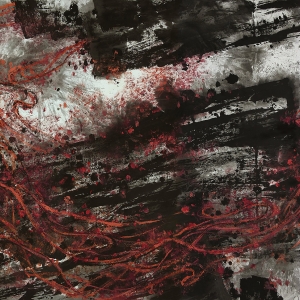
- The Milky Way
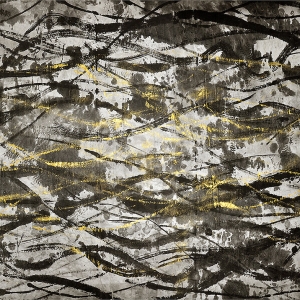
- The Trace of Time
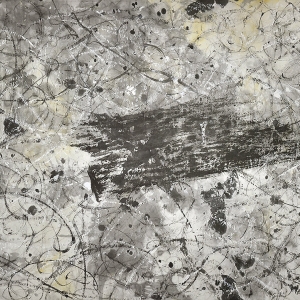
- Reborn
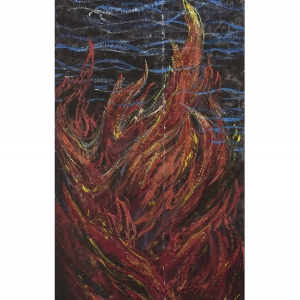
- Complex I
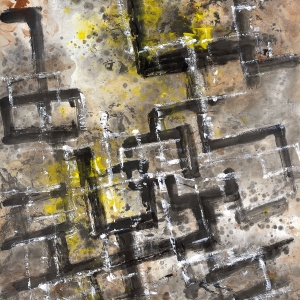
- Complex II
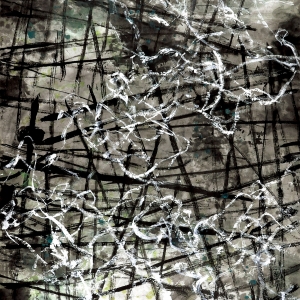
- Return
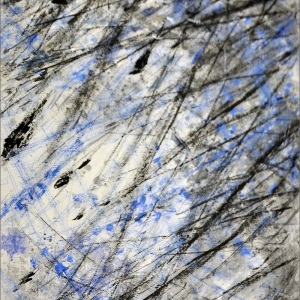
- Snowy Days

- A Howl to Firmament
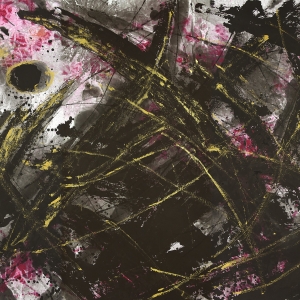
- Red Leaves on the Mountain in Autumn
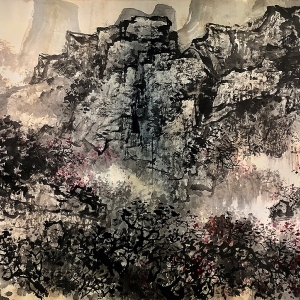
- An Ancient Gate
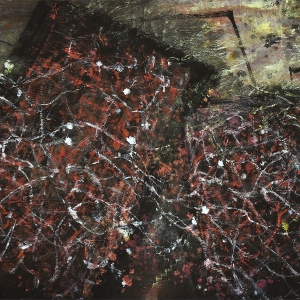
- A Joyful Dance查看更多
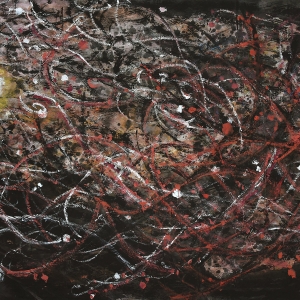
艺术家介绍

Liu Yiyuan, Professor of the Department of Chinese painting, Hubei Institute of Fine Arts, Member of Wuhan Culture and History Research Institute. He was born in Wuhan in July, 1942. At the age of 17, he took up the job of Chinese traditional painting. In 1979, he was admitted to Hubei Institute of Fine Arts as a graduate student majored in Chinese painting, and was appointed to the faculty to teach landscape painting and flower-bird painting upon graduation. Currently he is dedicated to the creation and research of modern and contemporary ink painting.
In April 1992, Liu Yiyuan was invited and funded by Castres municipal government of France to hold an exhibition and give an lecture in France;
In October 1998, Beijing Yiuyuan International Art Museum held the "Heart Image and Landscape: Liu Yiyuan Ink Painting Exhibition";
In April 2003, the Art Museum of Hubei Institute of Fine Arts held " Heart Image: Liu Yiyuan's Ink Painting Exhibition";
In October 2008, National Art Museum of China held " Heart Image: Liu Yiyuan's Landscape Painting Exhibition";
In November 2010, Wuhan Art Museum held "Extension of Ink: Liu Yiyuan's Works Exhibition";
In March 2012, Shanghai Art Museum held "Heart Image of Yiyuan: Liu Yiyuan’s Modern Ink Painting Exhibition";
In September 2012, Beijing Today Art Museum held " Feelings of the Changes and Heart Image -- Liu Yiyuan’s Modern Ink Painting Exhibition";
In December 2013, Hubei Provincial Museum held the "A Running Brush Pen Through the Time: A Retrospective Exhibition of Liu Yiyuan's Landscape and Flower-bird Paintings";
In March 2015, Xiamen Art Museum held "the Spring of Heart Image: Liu Yiyuan’s Ink Painting Exhibition";
In March 2017, the University City Art Museum of Guangzhou Academy of Fine Arts held "Heart Image and the World: Liu Yiyuan’s Ink Painting Exhibition";
In June 2017, Rome Spazio Art Make ,Make, Italy, held the "Trace of Life: Liu Yiyuan’s Ink Painting Exhibition";
In April 2018, Beijing Jindu Art Center held "Bearing and Enlightenment: Liu Yiyuan’s Ink Painting Exhibition".

展览介绍
Exhibition of Artworks by Xu Beihong, Zhou Lingzhao and Dai Ze
Xu Beihong, the first President of China Central Academy of Fine Arts(CAFA), is a master of modern painting and art and alsoan art educator. Zhou Lingzhao and Dai Ze were both invited by Xu Beihong to teach at the CAFA, and they both adhere to the direction of art education and creation initiated by Xu Beihong. As pioneers of Chinese art in the 20th century and the founders of Chinese modern art education, the three artists have made historic contributions to the establishment of the Chinese modern art education system.
On Aug. 30, 2018, at the 100th Anniversary of CAFA, Xi Jingping, General Secretary of the CPC Central Committee, Chinese president and Chairman of the Central Military Commission (CMC) wrote a letter to 8 reputed senior professors including Zhou Lingzhao and Dai Ze in reply, sending them sincere greetings and put forward ardent hope of promoting Chinese art education and its spirit. He hopes that CAFA can teach students with the virtues and fraternity, produce masterpieces with great beauty, and be committed to building itself into a cradle of socialist builders and successors.
To commemorate the 1st anniversary of the reply by President Xi to the seniors professors of CAFA, and to celebrate the 70th anniversary of the founding of the People’s Republic of China, we launch the “Exhibition of Artworks by Xu Beihong, Zhou Lingzhao and Dai Ze”. We organize institutions in China, both public and private, to exhibit more than 300 of their collections of the three artists, hoping to demonstrate the great achievements they achieved in art education and art creation through their works, artistic ideas and historical materials. Xu Beihong, Zhou Lingzhao, and Dai Ze, who are closely interrelated with each other, boast high reputation in both professional excellence and moral integrity. This exhibition can also serve as an solid yet lively evidence of the“spirit of Chinese art education” promoted by President Xi. Meanwhile, through the exhibition, we wish to visually present the artist style, virtues and morality of the three artists and therefore deepen the public understanding of them. We hope in this way the exhibition will contribute to the development of domestic art education and promoting the spirit of Chinese art education.

展品欣赏
- Tiger and Rabbit
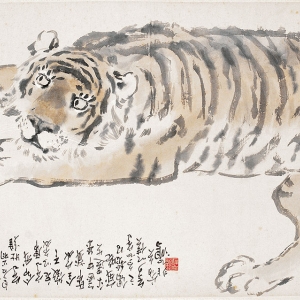
- Arenga Pinnata Tree
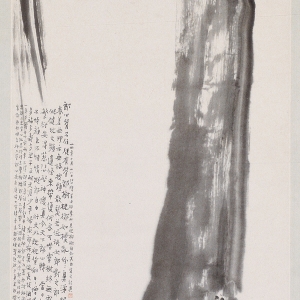
- Huai Su
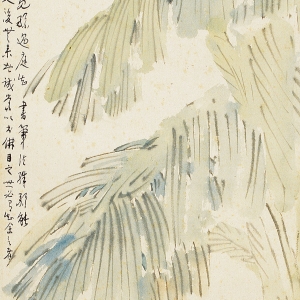
- Qin Qiong Sells the Horse
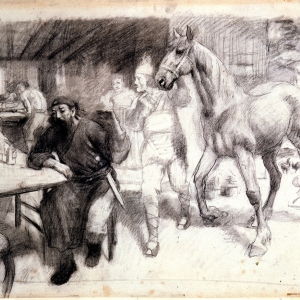
- Legend of the Three: Lady Red Dust
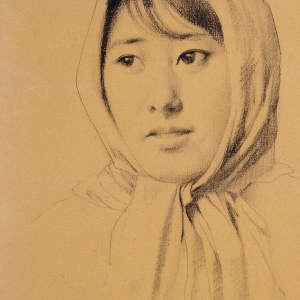
- Ba People Draw Water
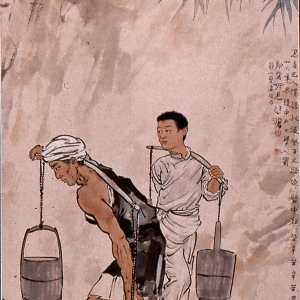
- Remembrance of heros
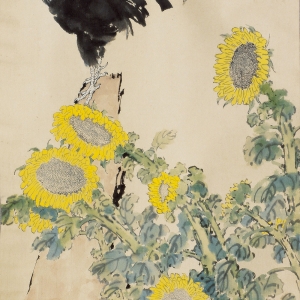
- Condor
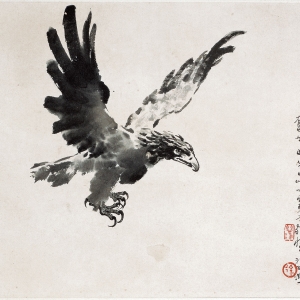
- A Portrait of Tagore
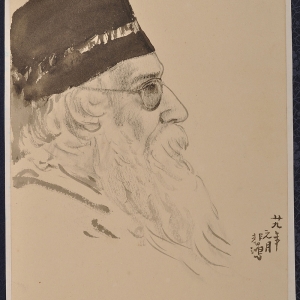
- Running Horses
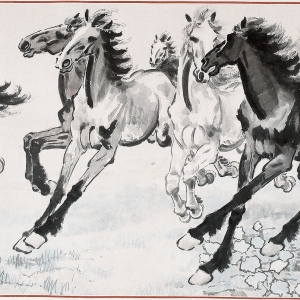
- National Martyrs
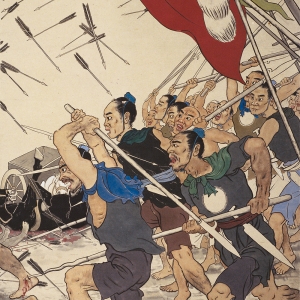
- On hearing the News of Nanjing Liberation on Congress for the Defense of World Peace查看更多
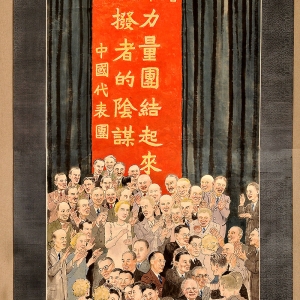
艺术家介绍

Xu Beihong, born in Yixing, Jiangsu Province, is a master of modern painting and art and an art educator. He studied in France and has long been engaged in art education after his return. He has successfully taught in the Painting Research Association of the Peking University, National Central University, School of art, Peking University, and Peking National Art Academy.
Xu Beihong was good at both calligraphy and painting and is renowned in painting horses. He puts forward “the Chinese Painting Improvement Theory”, emphasizing that the Chinese art should reform and innovate. Besides, he cultivated a galaxy of talents and backbones for art creation and art education. This has made historic contributions to the founding of the Chinese modern art education system. He is undoubtedly the pioneer of Chinese art in the 20th century and the founder of Chinese modern art education.
Zhou Lingzhao, born in Pingjiang, Hunan Province, is a professor in Central Academy of Fine Arts and consultant of the Chinese Mural Academy. He has successively served as the Director of National Painting Studio, Mural Department, CAFA, art design consultant of China Stamp Printing Bureau, Director of Chinese Artists Association, President of the Chinese Gouache Institute of the Chinese Artists Association, and etc.
He has participated in the design of National Emblem of the People's Republic of China, Emblem of the CPPCC, Flag of the Young Pioneers and etc. He painted the portrait of Chairman Mao on the Tiananmen Gate-tower in the founding ceremony of PRC. He also designed the Flag of the Communist Youth League, three medals of the Chinese People's Liberation Army, and was in charge of the overall art design of the 2nd, 3rd, and 4th sets of RMB. He is an artist who is constantly exploring and attempting to use a variety of painting mediums while sticking to the national and traditional culture and taking beautiful sceneries and people as his life-long artist theme.
Dai Ze, born in Yunyang, Sichuan Province, is a professor in Central Academy of Fine Arts and consultant of the Chinese Mural Academy. In 1942, he was admitted to the Art Department, National Central University and learnt from Xu Beihong and Chen Zhifo, etc. Then at the invitation of Xu Beihong, he went to teach in Peking National Art Academy. In 1949, he assisted Xu Beihong to prepare and establish the Central Academy of Fine Arts and in 1985 he assisted Mrs. Liao Jingwen to open the Xu Beihong Studio and took charge of teaching.
During decades of teaching, he has cultivated a large number of talents such as Jin Shangyi, Wang Jindong and so on. His paintings, including “Group Meetings of Peasants”, “ Sign for Peace” are excellent realistic works in the new China. Dai Ze, as one the founders of the art education in the new China, has made significant contributions to art creation and education. He is a vital participant and witness in the development of modern art.

展览介绍
Family Life and Beliefs in the Figure Paintings Since the Ming and Qing Dynasties
Figure painting is a major branch of traditional Chinese paintings. It became matured earlier than landscape paintings and bird-and-flower paintings. It was always placed as the forefront type among different types of Chinese ancient paintings in the past dynasties, revealing its importance. “The Classified Records of Ancient Chinese Paintings”(《古画品录》) written by Xie He in the Southern Dynasties says, “painting can render exhortations, and record historical vicissitudes, through which the history of thousands of years can be seen.” In the early stage of Chinese paintings, figure painting played an incomparably important role due to its educational function endowed by its special narrativity. After the Song and Yuan dynasties, scholars’ paintings began to gain their popularity. Meanwhile, when landscape paintings and bird-and-flower paintings became the mainstream, figure paintings were gradually marginalized. In the end, its marginal status was in sharp contrast to the previous glory, and today we even have forgotten the great tradition of figure painting in the history of Chinese painting.
By the Ming and Qing dynasties, though the historical status of figure paintings was no longer prominent, its superb artistry had never fallen into decline. It went on developing and progressing in high standards. Especially as the large amount of scholars of middle and lower classes appeared and the need for expressing family life and beliefs got stronger, paintings of different themes, namely, ancestors paintings that represent order, merry-making paintings that represent internal and external harmony, auspicious paintings that represent sharing between gods and man, extended and permeated into every corner of Chinese traditional society and even into the cultural circle of East Asia,
As an ancient saying goes, “to cultivate one's moral character and put one's family affairs in order”. Today we “emphasize family, family education and family tradition”, which in fact inherits the core value of the above ancient saying. As we ring out the Old Year and ring in the New Year, on the occasion of celebration and reunion during the Spring Festival, the Hunan Museum, with joint efforts from the Changsha Daguan Culture, dedicatedly presents a special Chinese traditional culture exhibition on “family and country”, displaying 60 figure paintings and related exhibits since the Ming and Qing dynasties. We hope that through this exhibition we can make due contribution to the inheritance of family traditions, to the formation of a better social conduct and ethos, and to the promotion of social harmony as well as the development of our nation and country.

展品欣赏
-

-

-

-

-

-

-

- 三品文官像

-

-

-

-
查看更多


展览介绍
齐家——明清以来人物画中的家族生活与信仰
人物画是中国传统绘画的重大画科,比山水、花鸟更早成熟。历代画史在分门别类时往往把它放在最前列,其重要性于此可见。南朝谢赫《古画品录》:“图绘者,莫不明劝诫,著升沉,千载寂寥,披图可鉴”,在早期绘画里,因其特殊的叙事性所赋予的教化功能,人物画的重要地位是其他画科所不能比拟的。宋元以降,文人画兴起并大行其道,山水及花鸟画成为主流,人物画逐渐被边缘化,与之前的辉煌形成强烈反差,以致今天连我们自己都遗忘了中国绘画史中伟大的人物画传统。
人物画发展到明清时期,画史地位固然不再显赫,但其高超的技艺并没有因此衰落,反而保持着极高的水准并继续向前发展。特别是随着中下士人阶层的壮大,家族生活与信仰之形象化表达需求的增长,表现昭穆有序的祖宗画、内外和谐的行乐图、人神共享的吉庆画,以其“成教化、助人伦”“修身、齐家”的社会功能,延伸和普及到中国传统社会的每一个角落,乃至整个东亚文化圈,成为一个引人注目的文化现象。
可以说古人的“修身、齐家”,与今天 “注重家庭、注重家教、注重家风” 的核心价值观是一脉相承的。值此己亥将去、庚子来临,全国人民万家团圆共庆新春佳节之际,湖南省博物馆倾力策划,联合长沙大观文化共同打造,用近60件明清以来的人物画及相关展品,为观众呈上一个有关“家国”的中国传统文化专题展览,期望能为传承优良家风,促进良好民风、社风形成,进而为推动社会和谐与民族进步、国家发展尽绵薄之力。

展品欣赏
-

-

-

-

-

-

-

- 三品文官像

-

-

-

-
查看更多


展览介绍
Reditus & Veritas –Exhibition of Modern Ceramics by Zhang Jitao
Zhang Jitao, born in 1931 in Changsha, Hunan, currently resides in Taiwan. After moving to Taiwan in 1949, he attended and graduated from Military Technical School and Military Foreign Languages School. In 1976, he learnt under the famous Taiwanese ceramicist Mr. Lin Baojia and from then on has been devoting his body and soul into ceramic creations. Zhang has always followed his master's ideology of "Ceramics Living Arts"; his artworks fused both the past and the present, connecting beauty and functionality, most of his works are based on Chinese traditional containers, which he then integrates with modern ceramics' design and functionality, along with glazes of his personal style. This clearly portrays the meaning of ceramics living: A fuse of innovation and aesthetics.
In November, 2014, Mr. Zhang Jitao donated 75 sets (99 pieces of artwork) of the most iconic works in his ceramics career to the Hunan Museum. Within the collection, there are ceramic plates that cleverly combine calligraphy with paintings, vivid and lively animal ceramic sculptures and colorful glazed ceramics. These works condense Mr. Zhang' s perception of life, carrying his many years of creative passion and filled with a rich philosophy of life. This exhibition is truly a cultural feast of modern ceramics.

展品欣赏
- the Lijiang River at Sunset(《漓江晚照》)Jun(Chun) Glazed Jar

- Far-sighted(《高瞻远瞩》)Sculpture of A Stone and A Sheep
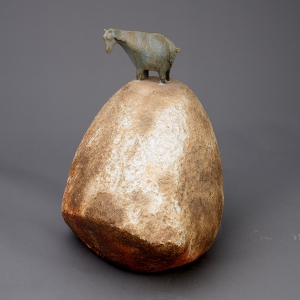
- National Image (《国家形象》) "Meirenzui" Jun(Chun) Glazed Cong
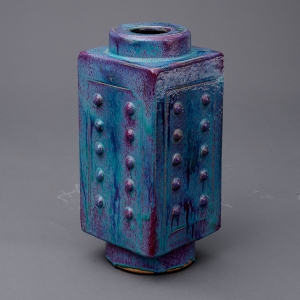
- Walk through the Past (《走过从前》) Jun(Chun) Glazed Jar
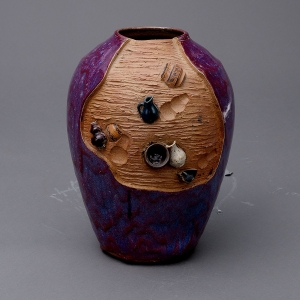
- Blossom and Wealth (《花开富贵》) Wine Vessel with Peony Patterns
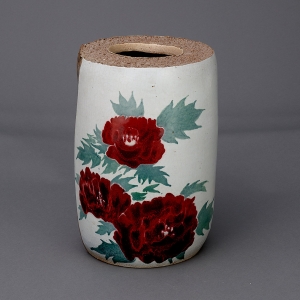
- Orchid in the Valley (《空谷幽兰》) Jun(Chun) Glazed Wine Vessel with An Orchid Pattern
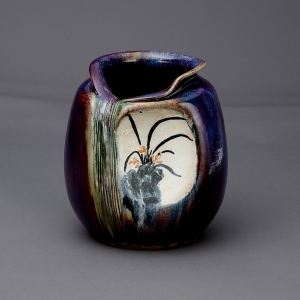
- Dance (《舞》) White Crawling Glazed Plate
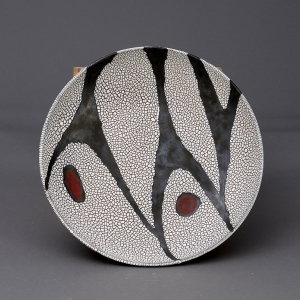
- An Impression of a Grotto Ⅰ (《石窟印象Ⅰ》) Painting on a Porcelain Plate
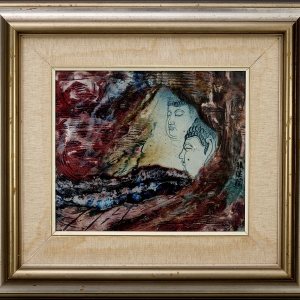
- An Impression of a Grotto Ⅱ (《石窟印象Ⅱ》) Painting on a Porcelain Plate
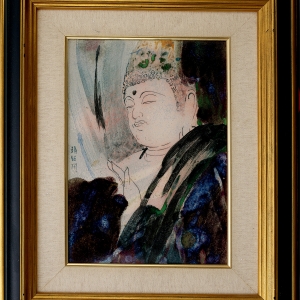
- Late Return (《晚归》) Pot with Egret Patterns
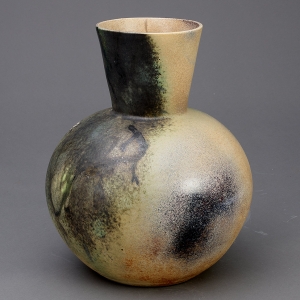
-
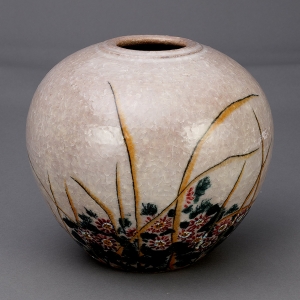
- Beauty (《美人醉》) Peachbloom Glazed Bottle查看更多
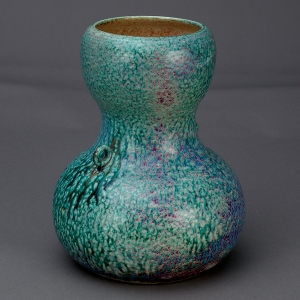
艺术家介绍

Zhang Jitao, born in 1931 in Changsha, Hunan Province, currently resides in Taiwan. After moving to Taiwan in 1949, he attended and graduated from Military Technical School and Military Foreign Languages School. After Zhang Jitao' s discharge from the military in 1971, he worked in American Merchants General Electronics Company, but he realized that this was not what he wanted in life, thus he quitted soon after. In 1976, he learnt under famous Taiwanese Ceramicist Lin Baojia in the art of ceramics, and from then on he has been devoting his body and soul into ceramics. Zhang has always followed the ideology of "Ceramics Living Arts"; his arts fused the past and the present, connecting beauty and functionality; most of his artwork are based on Chinese traditional containers, which he then integrates with modern ceramics' design and functionality, along with glazes of his personal style. This clearly portrays the meaning of ceramics living: A fuse of innovation and aesthetics.




